Introduction to Manual Wheelchair
Whether you’re choosing a Manual wheelchair for the first time or upgrading from an older model, finding the perfect fit can be a daunting task. Manual wheelchairs are versatile, user-driven mobility solutions that are widely available and come in many shapes, sizes, and types. They offer independence to users, but with so many choices, how do you know which one is right for you?
In this guide, we’ll break down everything you need to know about manual wheelchairs, from the types available to what factors you should consider when selecting one.
What is a Manual Wheelchair?
A manual wheelchair is a type of wheelchair that requires human power for movement. Unlike electric or motorised wheelchairs, manual wheelchairs are propelled by the user pushing the wheels or by an assistant pushing the wheelchair from behind. They are typically lightweight, easy to transport, and offer users more control over their mobility.
Types of Manual Wheelchairs
Standard Manual Wheelchairs
These are the most common types of manual wheelchairs. Manual standard wheelchair models are generally more affordable and are designed for users who don’t need advanced features. They are durable but tend to be heavier than other types, making them less suitable for frequent transportation or users with lower upper-body strength.
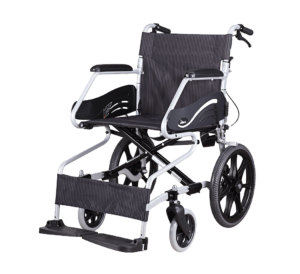
Lightweight Manual Wheelchair
As the name suggests, lightweight wheelchairs are made with lighter materials such as aluminium, making them easier to push and transport. They are ideal for users who want more mobility without sacrificing strength or support.
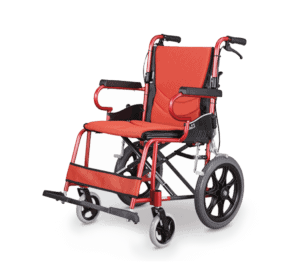
Ultra-Lightweight Wheelchairs
These are the top choices for users who prioritize speed, manoeuvrability, and ease of use. Ultra-lightweight wheelchair models are used by active individuals who travel frequently or engage in regular physical activity. However, due to their advanced materials and design, they may be more expensive.
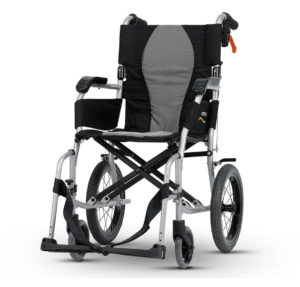
Sports and Active Wheelchairs
Designed for athletes or individuals with an active lifestyle, sports wheelchairs are specifically tailored for playing basketball, tennis, or racing. They are built for maximum performance and manoeuvrability, often with customizable features to suit individual preferences.
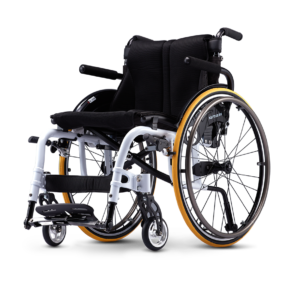
Transport Wheelchairs
Transport wheelchairs are different in that they are designed for short-term use and are typically pushed by someone else. They are usually more compact, with smaller wheels and foldable frames, making them ideal for quick trips or for use in airports and hospitals.
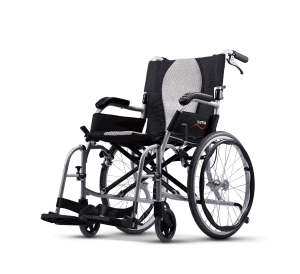
Factors to Consider When Choosing a Manual Wheelchair
User’s Lifestyle and Mobility Needs
Your lifestyle is a critical factor in determining the right wheelchair. Are you highly active, or do you spend most of your time indoors? If you travel often or engage in sports, you’ll need a model designed for such activities. If you spend more time at home, a standard or lightweight wheelchair may suffice.
Weight Capacity
Most manual wheelchairs have weight limits, typically ranging between 250 to 350 pounds. If you need a wheelchair that supports more weight, bariatric models are available, offering stronger frames and larger seating areas.
Frame Material
The material of the wheelchair frame significantly impacts its weight and durability. Most manual wheelchairs come in steel, aluminium, or titanium frames. Steel is heavier but more affordable, while aluminium and titanium offer lighter, more expensive alternatives with increased strength.
Wheelchair Dimensions
Seat Width and Depth
The seat dimensions must align with your body size to ensure comfort and proper posture. A seat that’s too wide can cause you to slide around, while a seat too narrow can be uncomfortable. Standard seat widths range from 16 to 20 inches.
Wheelchair Height
The wheelchair’s height, especially the backrest, is essential for support and comfort. A higher backrest provides more support for the upper body, which can be beneficial for people with limited mobility or core strength.
Foldability and Portability
For users who need to transport their wheelchairs frequently, foldable models offer the best portability. Many lightweight and transport wheelchairs have quick-folding features, making them easy to store in a car or closet.
The Importance of Wheelchair Comfort
Cushion and Backrest Support
A good seat cushion not only provides comfort but also helps prevent pressure sores, which are a common issue for people who spend long hours in their wheelchairs. Memory foam or gel cushions are excellent options. Equally important is the backrest, which should provide adequate support for the user’s spine.
Armrests and Legrests
The right armrests and legrests can make a world of difference in comfort. Adjustable armrests allow for better positioning, and swing-away leg rests make it easier to get in and out of the chair.
Cost Considerations
Manual wheelchairs can range from a few hundred to several thousand dollars, depending on the model and features. High-performance and ultra-lightweight wheelchairs tend to be more expensive, but they may be worth the investment for active users.
Insurance and Financing Options
Most health insurance plans, including Medicare, cover manual wheelchairs, but the specifics depend on your plan and the medical necessity. It’s important to check with your provider about coverage or explore financing options if insurance does not fully cover the cost.
Maintenance and Durability
Cleaning and Care Tips
Routine cleaning of the frame, wheels, and seat cushion helps to extend the life of your wheelchair. Use mild soap and water to clean the frame, and ensure that the wheels are free of debris to maintain smooth operation.
Replacing Parts and Accessories
Over time, certain parts of your wheelchair, such as the wheels or cushion, may need replacement. Keeping an eye on wear and tear can prevent larger issues down the line. It’s also possible to upgrade accessories like the cushion or backrest to improve comfort and functionality.
Advantages and Disadvantages of Manual Wheelchairs
Pros
- Lightweight and easy to transport
- Greater control over mobility
- Typically, more affordable than electric wheelchairs
- Requires less maintenance
Cons
- Requires upper-body strength for self-propulsion
- May not be suitable for individuals with severe mobility impairments
- Some models can be heavy and difficult to lift into vehicles
Top Brands of Manual Wheelchairs
Karma Healthcare Limited
Known for their durability and ergonomic designs, Karma offers a wide range of manual wheelchairs, from lightweight models to bariatric options.
Quickie Wheelchairs
A popular choice for sports enthusiasts, Quickie wheelchairs are designed for performance and customization. They offer both everyday and active wheelchair models.
Drive Medical
Drive Medical provides affordable and reliable manual wheelchairs. They are known for their comfort and are available in various styles to suit different needs.
Final Thoughts on Choosing a Manual Wheelchair
Selecting the right manual wheelchair is a deeply personal decision, depending on your lifestyle, physical needs, and budget. Whether you need a basic model for occasional use or an ultra-lightweight wheelchair for an active lifestyle, there’s a perfect fit out there for you. Taking the time to evaluate your specific requirements will lead you to a wheelchair that offers both comfort and independence.
FAQs
How do I know which manual wheelchair is right for me?
Consider your daily activities, mobility needs, and physical strength. If you’re unsure, consult with a healthcare provider or mobility specialist.
What’s the difference between a lightweight and a standard wheelchair?
Lightweight wheelchairs are made from lighter materials, making them easier to push and transport, while standard wheelchairs are typically more durable but heavier.
Can I use a manual wheelchair for sports?
Yes, many companies offer sports-specific wheelchairs designed for activities like basketball or racing.
How often should I maintain my wheelchair?
It’s a good idea to perform basic maintenance, such as cleaning and checking the wheels, once a month. For more intensive care, consult your wheelchair’s manual or a professional.
Does insurance cover manual wheelchairs?
In most cases, yes. Medicare and many private insurance plans offer coverage for manual wheelchairs when medically necessary. Always check with your insurance provider for specifics.

